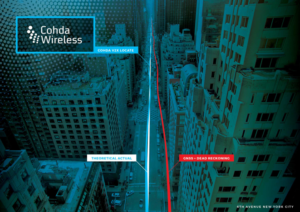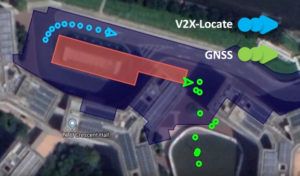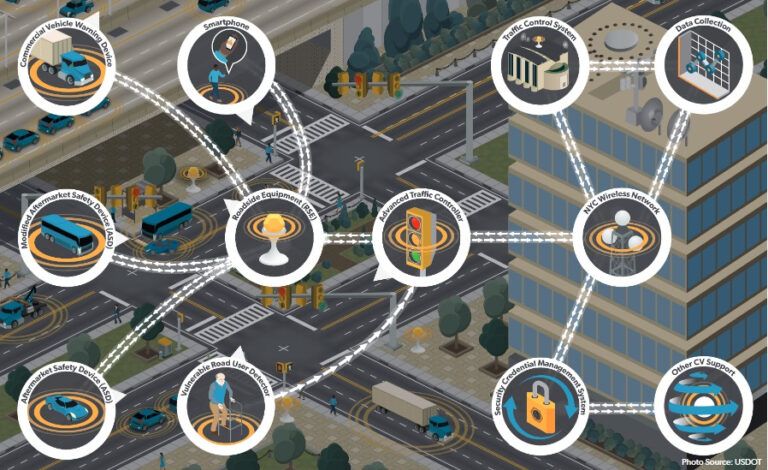The chief technical officer for Australian connected vehicle (CV) technology developer Cohda Wireless says other major cities around the world should be looking to emulate the adoption of the groundbreaking technologies used in New York City’s Connected Vehicle Pilot project.
The largest of its kind in the world, the NYC pilot encompasses three distinct areas in the boroughs of Manhattan and Brooklyn and comprises of over 3,000 vehicles consisting of cars, buses, and fleet vehicles. Its goal is to reduce the number of fatalities and injuries resulting from traffic crashes through the deployment of CV technologies that allow vehicles to ‘talk to each other,’ extending their perception horizon far beyond that of human capability. Cohda is involved in the initiative through the provision of its Vehicle-to-Everything (V2X) stack and applications to project partner Danlaw, including its unique V2X-Locate product, which enables sub-metre vehicle location accuracy in urban canyons, tunnels, underground car parks and other scenarios where GPS does not work well.
 Cohda’s V2X-Locate product uses ranging measurements between vehicles and equipped roadside infrastructure (RSUs) to enable enhances positioning accuracy. The RSUs need only be deployed at signalised intersection with spacing typically aligned with V2X coverage requirements. The ranges from RSUs are fed into Cohda enhanced V2X-Locate positioning engine on board the vehicle to accurately find its true location. Through the advanced processing capabilities of Cohda’s stack, the V2X-Locate solution is able to counteract the impact of non-line-of-sight and multipath signals. With offices in Europe, China and the USA, and partners in South Korea and Japan, the company’s V2X applications are the most widely deployed in the industry and it is the only one to have integrated its V2X software into series production with two car manufacturer platforms. Cohda expects that by 2021, over a million vehicles will feature its technology whilst it continues to secure infrastructure deployments across the USA, Europe and Australia.
Cohda’s V2X-Locate product uses ranging measurements between vehicles and equipped roadside infrastructure (RSUs) to enable enhances positioning accuracy. The RSUs need only be deployed at signalised intersection with spacing typically aligned with V2X coverage requirements. The ranges from RSUs are fed into Cohda enhanced V2X-Locate positioning engine on board the vehicle to accurately find its true location. Through the advanced processing capabilities of Cohda’s stack, the V2X-Locate solution is able to counteract the impact of non-line-of-sight and multipath signals. With offices in Europe, China and the USA, and partners in South Korea and Japan, the company’s V2X applications are the most widely deployed in the industry and it is the only one to have integrated its V2X software into series production with two car manufacturer platforms. Cohda expects that by 2021, over a million vehicles will feature its technology whilst it continues to secure infrastructure deployments across the USA, Europe and Australia.
 “Connected vehicle technology will be implemented on all of our roads, but it is city environments that present the most challenges,” said Dr Paul Alexander, Cohda’s CTO. “It is in these locations that the vehicle interactions are most complex and also where GNSS systems are most challenged. By leveraging the density of Road-Side Units in city environments, where there are many signalised intersections, we are able to achieve the localisation accuracy necessary for the V2X applications to operate effectively. We are seeing more and more tests and trials of connected vehicle technology in the USA, Europe, China and Australia, amongst other places. It is large-scale pilots like the one in New York that will take the market to a tipping point, revolutionising road transport as we know it.”
“Connected vehicle technology will be implemented on all of our roads, but it is city environments that present the most challenges,” said Dr Paul Alexander, Cohda’s CTO. “It is in these locations that the vehicle interactions are most complex and also where GNSS systems are most challenged. By leveraging the density of Road-Side Units in city environments, where there are many signalised intersections, we are able to achieve the localisation accuracy necessary for the V2X applications to operate effectively. We are seeing more and more tests and trials of connected vehicle technology in the USA, Europe, China and Australia, amongst other places. It is large-scale pilots like the one in New York that will take the market to a tipping point, revolutionising road transport as we know it.”
Scott Morell, VP of engineering at Danlaw, said, “Teaming up with Cohda to provide the optimum solution for the demanding New York City V2X environment proves the technology is ready for adoption in other municipalities. Safer streets are important for everyone.”





